Related Research Articles

Flanders is the Dutch-speaking northern portion of Belgium and one of the communities, regions and language areas of Belgium. However, there are several overlapping definitions, including ones related to culture, language, politics, and history, and sometimes involving neighbouring countries. The demonym associated with Flanders is Fleming, while the corresponding adjective is Flemish, which can also refer to the collective of Dutch dialects spoken in that area, or more generally the Belgian variant of Standard Dutch. The official capital of Flanders is the City of Brussels, although the Brussels-Capital Region that includes it has an independent regional government. The powers of the government of Flanders consist, among others, of economic affairs in the Flemish Region and the community aspects of Flanders life in Brussels, such as Flemish culture and education.
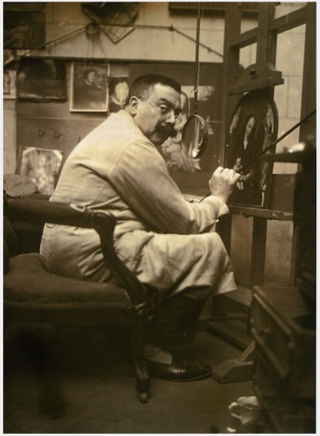
Josephus Maria Van der Veken was a Belgian art restorer, copyist, and art forger who mastered the art of reproducing the works of early Netherlandish painters.
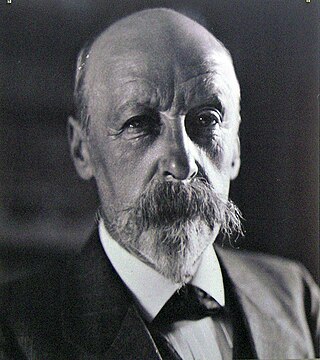
Emile Claus was a Belgian painter.

Flemish painting flourished from the early 15th century until the 17th century, gradually becoming distinct from the painting of the rest of the Low Countries, especially the modern Netherlands. In the early period, up to about 1520, the painting of the whole area is typically considered as a whole, as Early Netherlandish painting. This was dominated by the Flemish south, but painters from the north were also important. Dutch and Flemish Renaissance painting, of which Antwerp became the centre, covers the period up to about 1580 or later, by the end of which the north and south Netherlands had become politically separated. Flemish Baroque painting was especially important in the first half of the 17th century, dominated by Rubens.

James Sidney Edouard, Baron Ensor was a Belgian painter and printmaker, an important influence on expressionism and surrealism who lived in Ostend for most of his life. He was associated with the artistic group Les XX.

The Royal Museums of Fine Arts of Belgium are a group of art museums in Brussels, Belgium. They include six museums: the Oldmasters Museum, the Magritte Museum, the Fin-de-Siècle Museum, the Modern Museum, the Antoine Wiertz Museum and the Constantin Meunier Museum.

The Museum of Fine Arts an art museum in Ghent, Belgium, is situated at the East side of the Citadelpark.
Jan Van Imschoot is a Belgian contemporary artist whose works are collected by various international museums.
Despite its size, Belgium has a long and distinguished artistic tradition that goes back to the Middle Ages, considerably pre-dating the foundation of the current state in 1830. Art from the areas making up modern Belgium is called in English Netherlandish up to the separation with the Netherlands from 1570 on, and Flemish until the 18th century.

Jan Janssens was a Flemish Baroque painter and draftsman who is considered to be the most important of the so-called Ghent Caravaggisti. These Caravaggisti were part of an international movement of European artists who interpreted the work of Caravaggio and the followers of Caravaggio in a personal manner. Janssens altarpieces and other compositions offering very realistic representations of religious motifs adorn many churches in and around Ghent. He also worked on commissions for international patrons.

The Exposition des primitifs flamands à Bruges was an art exhibition of paintings by the so-called Flemish Primitives held in the Provinciaal Hof in Bruges between 15 June and 5 October 1902.
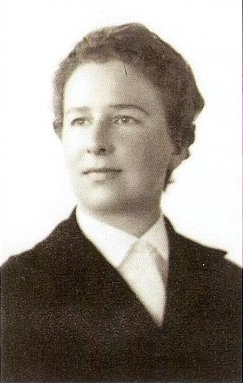
Elisabeth Dhanens was a Belgian art historian specialising in Early Netherlandish painting. Dhanens studied art history at Ghent University at the Higher Institute of Art, where she earned a Ph.D in 1945. Her dissertation was a monograph on the early-16th century artist Jan van Roome, published in 1948. From 1945 to 1952 Dhanens was a researcher in Brussels at the Royal Institute for Cultural Heritage, where she worked in the documentation laboratory. From 1952 to 1976 she held a position as art inspector in East Flanders's Art Patrimony, where she collected inventories from churches for the government. Based on field work in Italy in the early 1950s she published a monograph about Jean Boulogne in 1956, which earned her an award from the Royal Flemish Academy of Sciences, Letters and Fine Arts and a year later a Fulbright scholarship - allowing her to study in the United States.
Juliette Wytsman was a Belgian impressionist painter. She was married to painter Rodolphe Wytsman. Her paintings are in the collections of several museums in Belgium.

The Lamentation over the Dead Christ is a painting by the Flemish painter Anthony van Dyck, created c. 1629. It is now in the Royal Museum of Fine Arts Antwerp.
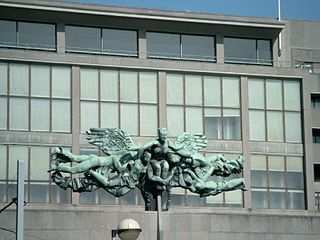
Jozef Cantré was a Belgian sculptor and illustrator. He was one of the main artists in the development of the movement of Flemish Expressionism.

Flemish Expressionism, also referred to as Belgian Expressionism, was one of the dominant art styles in Flanders during the interbellum. Influenced by artists like James Ensor and the early works of Vincent van Gogh, it was a distinct contemporary of German Expressionism. Contrary to the more rebellious and erotic nature of many German Expressionist works, the Flemish art of the School of Latem was more oriented towards the farming life, and was expressed in earthy colours and vigorous brushwork. It was also in general more oriented towards France and Brussels than to Germany, and incorporated elements of Fauvism and Cubism, for example the interest in "primitive" art, of both the ethnic and folk traditions. Flemish Expressionists like Spilliaert were more influenced by Ensor and Symbolism, or like Wouters were closer to the vibrant colours used by the Fauvists. The main proponents were Gust De Smet, Constant Permeke and Frits Van den Berghe.
Illuminare – Centre for the Study of Medieval Art KU Leuven, is a university-led research and documentation centre. It is situated in the University Library in the town of Leuven, Belgium and is accessible to both academics and students. The focus on Medieval and Early Modern Art from the Southern Low Countries in a European perspective is facilitated by both research and doctoral projects that are in turn supported by a vast international network of universities, institutions, and museums.

Théophile Marie Francois Lybaert or Theofiel Lybaert was a Belgian painter and sculptor. He commenced his career as a painter of genre and Orientalist scenes. He later painted subjects from the national and international history, military life and the bible. He was mainly known for his religious paintings executed in an archaic, Gothic style that reprised the 16th century models of Northern-European masters such as Hans Memling and Albrecht Dürer. These works earned him the appelation of 'modern Gothic' or 'contemporary Memling'. In a final period starting from the 1910s he developed towards an eclectic style incorporating Symbolism.

The Phoebus Foundation is an art foundation with philanthropic objectives. The foundation acquires works of art, guarantees a professional framework of conservation and management, and looks after the conservation and restoration of the objects. In doing so, it focuses on scientific research. It shares the results of this all with the widest possible audience, through exhibitions, cultural expeditions, symposiums and publications.
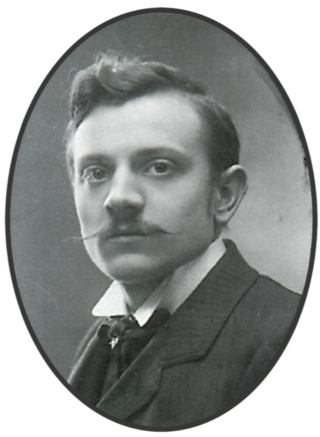
Geo (Georges) Verbanck was a Belgian sculptor and medalist.
References
- ↑ "About the Flemish Art Collection". De Vlaamse Kunstcollectie. Retrieved 23 June 2017
- ↑ "Flemish Art Collection launches website on the Flemish Primitives". Lukas - Art in Flanders, 2011. Retrieved 23 June 2017